
Unlocking Success: 10 Proven eCommerce Marketing Strategies

Hey there, all you folks into an eCommerce business! Ever heard of eCommerce Marketing Strategies? They’re like the secret ingredients that can drive a bunch of traffic to your online store and turn clicks into actual sales. But let’s be real – choosing the right marketing tactics can sometimes feel like wandering through a maze.
No stress, though – we’re here to help you out. In this write-up, we’re uncovering the top-notch strategies that can seriously change the game for your online business journey. We’re talking about everything from gaining the attention of new customers to making your regulars feel like rockstars.
No matter if you’re wondering how to get started, aiming to boost your sales, or just curious about the nuts and bolts of e-commerce success, this blog is your guide.

What is eCommerce Marketing Strategies?
eCommerce marketing is like using smart moves to get lots of people to visit your online store and then turn them into happy customers who buy your stuff. It’s not just about the website – it’s also about things you do outside the website to make your brand famous, keep your customers coming back, and make more sales.
Imagine it’s like a big puzzle. You’ve got these tactics that you use to tell people, “Hey, come check out my online store!” And when they do, you make sure they have such an awesome experience that they want to buy things from you. And it doesn’t end there – you want them to keep coming back for more.
Explore a bunch of eCommerce marketing strategies that you can try out to make your online store a success story.
Best 10 Proven eCommerce Marketing Strategies
Here are some proven eCommerce marketing strategies that can help you grow your business:
1. Understanding Your Target Audience
When you’re selling things, it’s really important to know who might want to buy them. So, by understanding your target audience, you can get to know your customers better. That way, you can make your products and marketing fit what they love. Here’s a simple way to do it:
Look into What People Like
Pretend you’re a detective. You want to know what folks like, how they act, and what issues they face. That’s what market research is – it’s like being a detective for your potential customers. This helps you make things they’ll really enjoy.
Tools That Help
Think of tools like magic helpers. Google Analytics and social media insights are like these helpers. They tell you stuff about people who check out your online store. So, you can find out what they’re into and what they do.
Meet Your “Buyer Personas”
It’s kind of like making characters for a story. But here, it’s for your business. “Buyer personas” are like detailed descriptions of your customers. You can give them names, ages, and hobbies. It helps you understand what they actually want. With this info, you can make your marketing work really well.

2. Search Engine Optimization (SEO)
Among various eCommerce marketing strategies, search engine optimization (SEO) is like giving your website a special treatment to help it be one of the first things you see when you search online. It’s about making your website better in two ways:
- one, by making it great on its own,
- and two, by making it popular with other websites.
This way, when people look for something, your website stands out and is easy to find.
Use On-page SEO Strategies
Using on-page SEO strategies is really important for your website. These strategies make your site appear higher in search results so people can find you easily online.
Here are some key things to focus on for on-page strategies:
Keyword Research: Find the right words people use when searching. These words help search engines know what your site is about.
Title Tags and Meta Descriptions: These are like your website’s hello. The title tag is the headline, and the meta description is a quick preview. Make them interesting so people know what your site is about.
Quality Content: This is the good stuff on your site. Make it helpful, interesting, and well-written. This tells search engines your site is important.
URL Optimization: Your website’s address is the URL. Make it simple so both people and search engines get what your page is about.
Leverage Off-page SEO Techniques
Let’s discuss why off-page SEO techniques are important. They help your website become popular on the web, which makes it show up better when people search.
Here are some things to care about that can make your website stand out in search results.
Backlink Building: Backlinks are like website high-fives. When other sites link to yours, it tells search engines your site is trustworthy and neat.
Social Media Engagement: Think of this as chatting on Facebook, Instagram, and Twitter. When folks share and talk about your site there, it shows your site is interesting.
Local SEO: If you have a real shop, local SEO helps neighbors find you online. It’s like a big sign saying, “We’re here!” for folks nearby.
Keep in mind that these off-page tricks help your website be cool for both search engines and real people surfing the internet.

3. Paid Advertising Strategies
Paid Advertising eCommerce Marketing Strategies are like paying to show your ads online, helping more people see your stuff. It’s a way to get noticed by putting your message where people are looking.
Google Ads Campaigns
Imagine Google Ads like putting up a billboard in a busy spot on the internet. You pay to show your ads to people who are searching for things on Google. It’s a way to grab attention and bring in potential customers.
Use Keyword Research: Think of it as picking the right words that people often type when they’re looking for something online. If you’re selling comfy shoes, you want your ad to show up when someone types “comfy shoes” into Google. This way, your ad appears where it matters most.
Set a Budget and Monitor Performance: Decide how much money you’re comfortable spending on these ads. Keep an eye on how well they’re doing – are people clicking on them? Are they actually buying what you’re offering? This helps you make tweaks and changes to get the best result for your spending and make sure you’re not wasting money.
Facebook and Instagram Ads
Think of Facebook and Instagram ads like putting up posters in places where lots of people hang out online. You pay to show your ads to people who might be really interested in what you’re offering.
Use Eye-catching visuals and Compelling Ad Copy: It’s like making your ad look really cool and writing words in such a way that makes people want to know more about your products. Imagine you’re telling a story that people can’t resist to explore further.
Test Different Ad Formats and Audience Segments: Try out different ways of showing your ad, like different styles or pictures. Also, show your ad to different groups of people to see which group responds the best. It’s like finding out what works best to get people interested in your products.
Retargeting Campaigns
Think of retargeting as a friendly nudge to folks who’ve checked out your website in the past. It’s like saying, “Hey, remember us?” You use special ads to remind them about your awesome products or services.
Show Personalized Product Recommendations: Imagine you’re a shopkeeper who remembers what your customers like. With retargeting, you show them things they’re likely to enjoy based on what they’ve looked at before. It’s like giving them a personal shopping experience online.
A/B Test Different Retargeting Creatives and Strategies: A/B testing means trying out different ways of doing things to see what works best. In this case, it’s about showing different retargeting ads to see which ones catch more attention. Maybe you change the pictures or the words – whatever gets more people interested in coming back to your website and maybe even making a purchase.
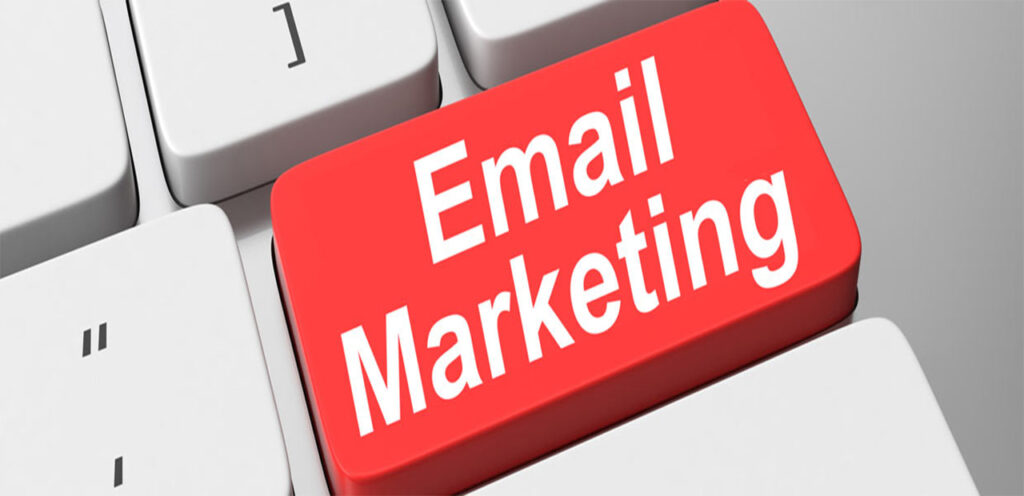
4. Email Marketing Strategy
Email Marketing Strategy is like sending friendly emails to people interested in your stuff. You share updates, offers, and make them happy to hear from you. About 4.3 billion people use email regularly.
Importance of Email Marketing
Here’s why it’s cool for online shops:
Staying Connected: When you send emails, it’s like saying, “Hey, we’re here!” to your customers. You remind them about your store and keep your brand in their minds.
Sharing Cool Stuff: You can tell your customers about new products, sales, and exciting things happening in your shop. It’s like telling them, “Guess what’s new?”
Personal Touch: Emails are personal. You can use someone’s name and make them feel like they’re talking to a friend. It’s like having a friendly chat online.
Special Deals: Imagine sending a secret code for a discount only to your email subscribers. It’s like giving them a special key to unlock savings.
Building Trust: Regular emails show you care about your customers. It’s like keeping in touch with an old friend. When they see you’re reliable, they trust you more.
Different Types of Email Marketing and Their Specific Purposes
Email marketing is a friendly way to keep your customers close and happy while boosting your eCommerce business. Let’s explore the various kind of types in the following:
Welcome Emails: Imagine this like a warm hug when someone enters your online store. You say hello, introduce yourself, and maybe offer a sweet discount. It’s a great start to their journey with you.
Newsletter Emails: Newsletters are like sharing stories with friends. You send updates, tips, and interesting things related to your products. It keeps your customers engaged and feeling connected.
Promotional Emails: These are like shouting out about your awesome sales, discounts, and special offers. You show the best deals and tempt your customers to shop.
Abandoned Cart Emails: Imagine someone adding things to their cart and then leaving. Here’s the blunt truth: When people put stuff in their cart but don’t buy, you’re losing money. Lots do this – 69.82% actually, as per the Baymard Institute. Abandoned cart emails gently remind them of the items they left behind, encouraging them to complete their purchase.
Birthday or Anniversary Emails: Sending birthday wishes or celebrating the time someone became your customer makes them feel special. You can also offer a little gift to show your appreciation.
Thank-You Emails: Thanking your customers for shopping with you is like saying “Thanks!” after a nice chat. It shows you care and appreciate their business.
Event Invitation Emails: If you’re having a special event or sale, you invite your customers through email. It’s like sending them an exclusive invitation to something exciting.
Exclusive Offers and Promotions: These are like secret deals just for your email subscribers. You make them feel like VIPs, offering them something special.
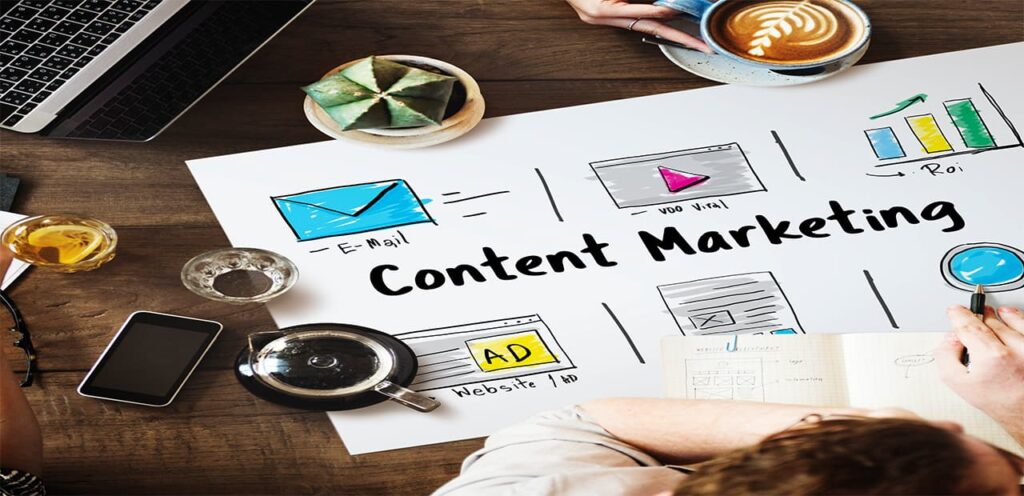
5. Content Marketing Strategies for eCommerce
Content Marketing for eCommerce is like sharing fun and helpful stories about your products. You make people interested, and they want to shop from you.
Here’s a tip: Follow the 80/20 rule like Pareto. That means 80% of what you share should be helpful stuff, and only 20% should be about promotions. And remember, whatever you post should be interesting, unique, and really make sense.
Develop a Content Marketing Plan
Think of content marketing as telling cool stories about your products. It’s like showing a behind-the-scenes look at your shop. This makes people more interested and excited to shop from you.
There are key elements of a content marketing strategy. Here are some important things for your content plan:
Know Your Audience: Understand who you’re talking to so you can share what they like.
Create Valuable Content: Make things that are helpful or fun for your audience. This keeps them engaged.
Choose Your Platforms: Decide where to share your content, like on your website, social media, or emails.
Plan Your Schedule: Figure out when and how often to share your stories. Always try to be consistent in this field.
Measure Success: See what’s working and what’s not. This aids you in improving and making your content even better.
High-Quality Content Creation
Creating great content isn’t just about telling your customers about your products – it’s about educating them, keeping them interested, and making your shop a favorite spot for them.
Produce Valuable Blog Posts, Videos, and Guides to Educate and Engage Customers: Imagine you’re making really helpful and interesting stuff, like blog posts, videos, and guides. It’s like sharing cool knowledge with your customers to keep them excited and interested in what you offer.
Optimize Content for Relevant Keywords to Improve Search Rankings: Think of it as using the right words people search for. When you use these words in your content, your website becomes more visible in search results. It’s like making sure your shop stands out in a crowd.
Share Content on Social Media and Through Email Newsletters: Imagine showing off your cool creations to your friends and sending out invites. Sharing your content on social media and sending it in emails is like letting everyone know about the awesome stuff you’ve made.

6. Social Media Marketing Strategy
Social media marketing strategy is like making a plan for how to use social media to show off your stuff, talk to people, and get more folks interested in your business. Over 70% of Americans, no matter their age or background, use at least one social media platform every single day.
Facebook is super popular, with 2.9 billion people using it every month. Instagram is right after, with 1.5 billion folks hanging out there. You can use a digital marketing thing to handle many profiles, but if you’re not into being everywhere, focus on these two cool spots.
Identify Key Social Media Channels
First, figure out where your audience hangs out online. Not all platforms are the same, so choose wisely. Think about who you’re trying to reach and what stuff you’ll post.
When you’re picking platforms, look at where your target audience is, what’s popular, and where your competition is. Also, see what kind of stuff you can post – like pics, videos, short blurbs, etc. Plus, make sure it fits your budget too.
Create Compelling Social Media Content
Making content that catches the eye is a big deal. Good stuff gets people interested and keeps them hooked. Think about what your audience likes and how your product helps them. Use catchy images, clear language, and simple messages.
For example, tell stories about your product. Show how it fixes problems or makes life cooler. Catchy images and quick captions work. Make sure your content feels real and share-worthy. You want folks to share it with pals.
User-Generated Content (UGC)
Almost 9 out of 10 people (89%) across the globe actually read reviews before they buy things.
Just ask your customers to share their product experiences on social media. When they do, show off their stories on your own social pages. This creates a bunch of real photos and stories about your products, proving how awesome they are. You can also make contests and freebies to get customers excited about sharing their own posts and being part of the team.
Interactive Content Campaigns
Make cool stuff like fun quizzes, questions, and filters that catch people’s interest. Create projects that grab attention and make folks want to tell others. When your brand is interactive and fun, it sticks in people’s minds, and they want it to show their friends.
Live Video Streaming
Give live videos a shot on platforms like Facebook Live or Instagram Live. It’s like talking face-to-face with customers and showing your products in action. You can answer questions and worries right there. Tease your next live video to build excitement and get folks watching.
Highlight Social Media Followers
Put your follower count from social media on your website. It’s like saying, “Look how many people like us!” Invite visitors to join your online crew for news and special stuff. More followers mean more trust in your brand. It makes people want to be part of the team.

7. Website Optimization Techniques
Website Optimization Techniques are like giving your website a superpower upgrade, making it load faster and work smoother. It’s all about ensuring people have a great time visiting your site.
Mobile-Friendly Design
The mobile-friendly design makes sure everyone can enjoy your website, no matter what device they’re using. It’s like rolling out the red carpet for visitors on small screens.
Optimize Your eCommerce Website for Mobile Devices to Cater to Mobile Users: Think of it like making your website really friendly for phones and tablets. This helps people who use these devices to browse and shop on your site easily.
Ensure a Smooth and Responsive User Experience Across Various Screen Sizes: Imagine your website is like a superhero outfit that fits everyone perfectly. It should work smoothly whether someone’s using a small phone or a big tablet.
Test Loading Times and Optimize Images for Faster Page Speed on Mobile: Loading times are like how fast your website appears. Make sure it’s quick on mobile devices by using the right-sized images that don’t slow things down.
Live Customer Support
Live customer support makes your website feel like a helpful store where you can ask anything and get the help you need right away.
Provide Live Chat or Chatbot Support on Your Website: Imagine having a friendly helper right on your website. It’s like a chat where you can ask questions and get quick answers, either from a real person or a computer program called a chatbot.
Assist Customers in Real-time with Their Queries and Concerns: Think of it as having someone ready to answer your questions right away, just like having a conversation with a helpful friend.
Offer Immediate Solutions to Enhance Customer Satisfaction: Imagine getting your problems solved on the spot, like magic. Live customer support gives you instant help, making customers happier with your service.
Customer Reviews and Testimonials: Customer reviews and testimonials are like real stories from people who’ve tried your products. They help others decide if your stuff is a good fit for them too.
Showcase Customer Reviews and Testimonials on Your Product Pages: Imagine your product pages like a hall of fame where happy customers share their experiences. You put their comments there so others can see how awesome your stuff is.
Encourage Satisfied Customers to Leave Reviews Through Follow-up Emails or Incentives: Think of it as asking your friends to share their thoughts after a cool experience. You might send them an email or even give them a little something as a thank-you for their feedback.
Address Negative Reviews Professionally and Offer Solutions to Resolve Issues: Imagine someone being unhappy and talking about it. You step in like a problem solver, being nice and trying to fix things. It’s like turning a frown into a smile.
Exit-Intent Pop-ups
Exit-intent pop-ups are like a last chance to make someone stay or come back. They offer a little extra something to make them rethink leaving your online store.
Use Exit-intent Pop-ups to Capture the Attention of Users Who are About to Leave Your Site: Imagine it like waving goodbye to someone who’s about to leave your store. These pop-ups appear just when someone is thinking of leaving your website.
Offer Discounts, Free Shipping, or Lead Magnets to Encourage Them to Stay or Return: Think of it as giving a little extra to make them change their minds. It’s like saying, “Wait! Here’s a special deal or something cool if you stick around.”
Keep Pop-ups Simple, Non-intrusive, and Easy to Close: Imagine the pop-up like a friendly tap on the shoulder. You want it to be helpful, not annoying. And if they’re not interested, they can easily close it.
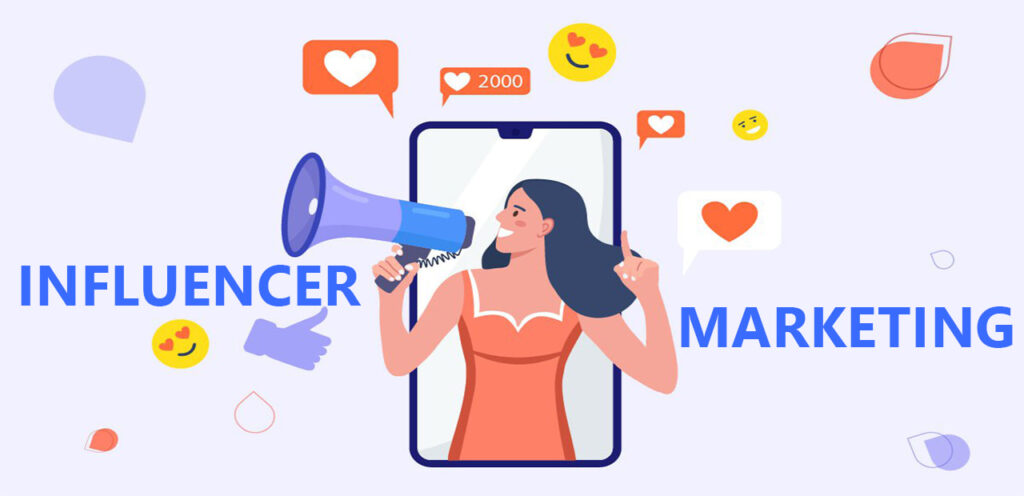
8. Influencer Marketing
Influencer Marketing is like teaming up with popular people online to talk about your stuff. They share it with their followers, and it helps more people know about your products.
Collaborating with Micro-Influencers
Working with micro-influencers is like getting buddies to talk about your products, and their followers listen because they trust them.
Partner with Micro-Influencers with a Smaller But Highly Engaged Audience: Think of it as teaming up with people who have smaller groups of fans, but those fans are really interested and excited about what they share.
Micro-influencers Often Have Niche Expertise and can Connect Better With Their Followers: Imagine them as experts in specific things. Their followers really trust what they say. It’s like chatting with a friend who knows a lot about something you’re into.
Develop Authentic and Long-term Partnerships with Micro-influencers to Build Credibility: Think of it as making friends who love your stuff. Building a real relationship over time makes their recommendations more genuine, which helps your brand look really good.
Affiliate Marketing Programs:
Affiliate marketing lets others help you sell your products, and everyone wins. Your promoters earn a bit, and you get more customers without doing all the work.
Launch an Affiliate Marketing Program to Expand Your Reach: Imagine it like having a team of online promoters. They talk about your products, and you give them a little something every time they bring you a customer.
Partner with Relevant Bloggers and Influencers to Promote Your Products: Think of it as teaming up with people who already have a bunch of followers who trust them. They talk about your stuff, and their followers might become your customers, too.
Offer Attractive Commissions for Successful Referrals: It’s like saying, “Thanks for bringing in customers!” You give a portion of the sale to the people who referred them. The more customers they bring, the more they earn.
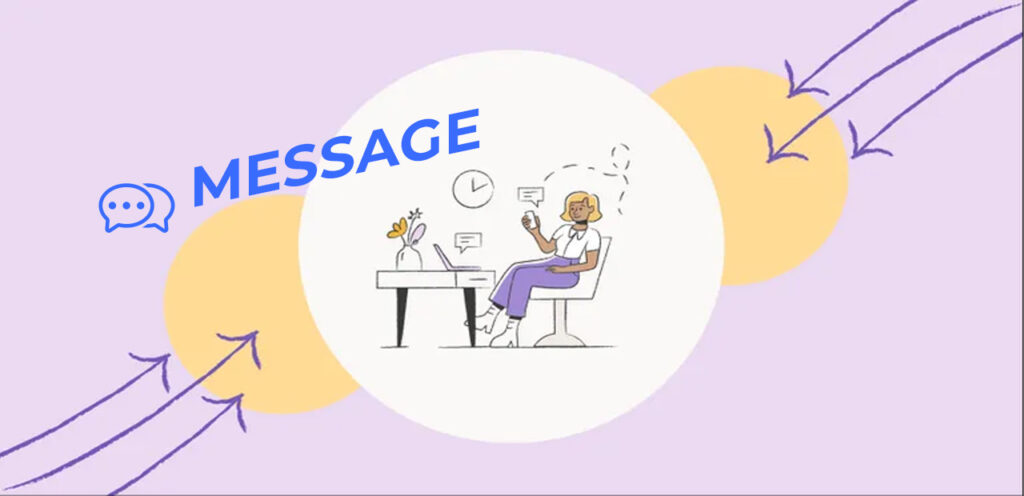
9. SMS Marketing
Imagine SMS marketing, like sending short and sweet messages to people’s phones. It’s a powerful way for online shops to connect with customers in a direct and personal way. It’s quick, direct, and can be a helpful addition to your eCommerce strategy.
eCommerce is totally nailing SMS marketing. Like 70% of folks think it’s a neat way for businesses to catch their eye. Marketo found that cool texts with pics get more clicks – like 15% more! And they even make 20% more people join in on the campaigns.
Benefits of Using SMS Marketing
This type of marketing is like sending friendly reminders and special offers to people’s pockets.
SMS Marketing Helps You Reach Customers Directly on Their Mobile Devices: Think of it as tapping someone on the shoulder and saying, “Hey, check this out!” SMS marketing lets you send special deals, updates, and info right to their phones, where they’re more likely to see it.
Emphasize the High Open Rates and Quick Response Times Associated with SMS: When you get a message on your phone, you usually open it, right? SMS messages have super high open rates, and people tend to respond quickly. It’s like having a quick chat.
Mention the Potential for SMS to Complement Other Channels like Email and Social Media: Imagine your marketing as a team effort. SMS can work with emails and social media to remind people about your offers. It’s like making sure your message gets through different ways.

10. Loyalty Programs and Referral Marketing
Loyalty Programs are like earning rewards for shopping with your favorite store. Referral Marketing is when you tell friends about a cool shop, and if they shop too, you both get goodies.
Customer Loyalty Program
Loyalty programs make your customers feel special and appreciated, and they keep coming back for more of your awesome products.
Launch a Customer Loyalty Program with Exclusive Rewards and Discounts: Think of it like having a special club for your frequent shoppers. You offer them cool rewards and discounts that only they can get.
Offer Loyalty Points for Purchases and Referrals: Imagine it as giving gold stars for every purchase and when they bring in friends. These stars turn into rewards they can use later.
Retain Loyal Customers and Encourage Repeat Purchases: It’s like keeping your favorite customers happy and coming back for more. With rewards and discounts, they’re more likely to shop with you again and again.
Referral Program Incentives
Referral programs make your happy customers your shop’s ambassadors. They bring in new customers, and everyone gets a little treat. It’s a win-win for spreading the love!
Encourage Satisfied Customers to Refer Friends and Family Through a Referral Program: Imagine it like telling your happy customers, “Hey, if you think we’re awesome, tell your friends!” It’s like spreading the word about your shop.
Offer Rewards or Discounts to Both the Referrer and the Referred Customer: Think of it as giving a high-five to the person who referred someone and a welcome hug to the new customer. Both get something special, like discounts or gifts.
Create Referral Links or Codes to Track Referrals Accurately: It’s like giving each referrer a special code or link. When their friends use it to shop, you know who brought them in. It helps you keep track and give rewards right.

11. Seasonal and Holiday Campaigns
Seasonal campaigns are like throwing a celebration where everyone gets cool stuff and the joy of the season. It makes your shop feel like a festive hotspot.
Plan Seasonal Marketing Campaigns Around Holidays and Special Occasions: Imagine your shop throwing a party for each special time of the year. You plan cool stuff for holidays and other fun occasions to make shopping extra exciting.
Create Festive-themed Visuals and Content to Attract Customers: Think of it as decorating your shop’s window for the season. You make your website and ads look and feel like the holiday, making customers feel the festive spirit.
Offer Exclusive Deals and Promotions During Festive Periods: Imagine giving presents during special times. You offer special discounts or goodies to your customers during holidays, making shopping with you even more delightful.
If you need help with eCommerce Marketing Strategies, check out the “Visibility Fix” today. They’re like the experts in making your shop stand out. They create fun ads and posts that show off your stuff and make people excited to shop. With their magic, your shop will get noticed by lots of potential customers!
Wrapping Up
These are the keys to triumph with eCommerce Marketing Strategies. From social media magic to catchy content and loyalty rewards, you’ve got the tools to shine. Remember, these above-mentioned marketing strategies are like your secret recipe for online success. So, go ahead and use these strategies to make your shop the star of the digital market!
FAQs
eCommerce is about selling stuff online and getting it to people. Digital marketing is how you talk to folks and get them to buy things. When you shop for shoes on a website and actually buy and get them, that’s e-commerce happening.
The winner is social marketing. Small businesses can connect with customers using social marketing. It’s a friendly way to engage without being pushy.
It’s like managing a brand’s image using the internet and social media. It helps position a brand well online, which is super important these days.
It’s like a big plan that helps a company reach its goals by knowing what customers want and having something special that sets them apart. It covers everything from who your customers are to how you talk to them.

Solayman Rumon
A writer, blogger, and traveler. Being creative and making things keep me happy is my life motto.
Popular Posts


10 Proven Tips to Increase eCommerce Sales in 2024

eCommerce Sales Funnel Strategies for eCommerce Success

37 Best Proven Tips to Increase Your eCommerce Conversion Rate
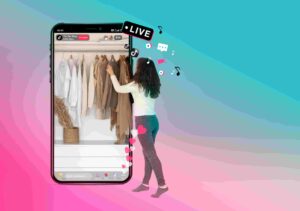
TikTok Marketing: Creating a Successful Strategy in 2024

15 Tips for Building a Successful Omnichannel E-commerce Strategy
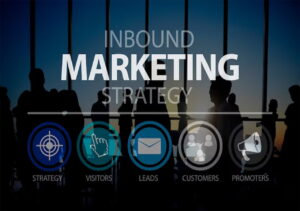
21 Best Inbound Marketing Strategies for E-commerce Success

16 Must-Have Facebook Strategies for E-commerce
More Posts

18 Best eCommerce Design Agencies in 2024
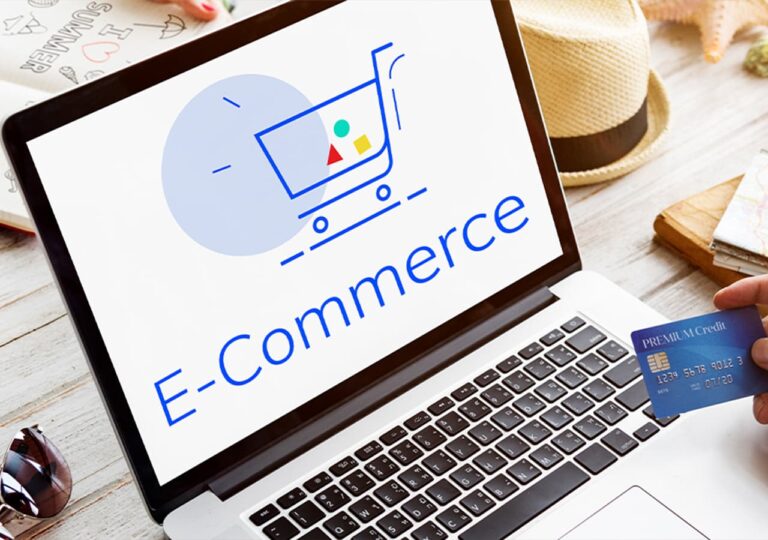
7 Tips on How to Build an Ecommerce Website from Scratch

10 Proven Tips to Increase eCommerce Sales in 2024


